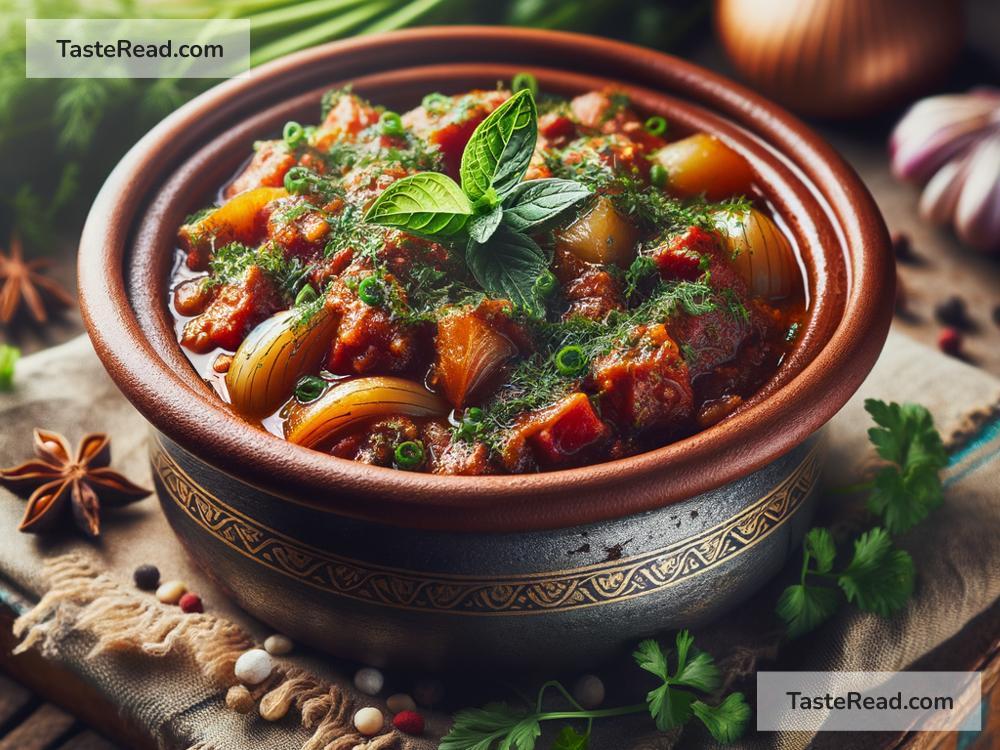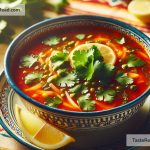How the Moroccan Tagine Became a Signature Dish
When we talk about Moroccan cuisine, one dish stands out as a symbol of its rich culture and traditions – the tagine. This iconic dish, which is also the name of the earthenware pot it’s cooked in, has delighted palates worldwide with its unique flavors and aromatic spices. But how did the tagine become such a signature dish in Moroccan cuisine? Let’s take a journey through the history and essence of this beloved culinary masterpiece.
A Blend of Cultures and Flavors
The tagine’s roots can be traced back to ancient times, but it gained prominence during the Islamic Golden Age, a period of cultural, economic, and scientific flourishing in the Islamic world, roughly from the 8th to the 14th century. This era saw a fusion of different culinary traditions from Arab, Berber, Moorish, and even Andalusian cultures, which influenced and enriched Moroccan cuisine, giving birth to the tagine we know today.
Cooking in a Tagine
The magic of the tagine lies in its distinctive cooking method. The cooking vessel itself is a piece of earthenware consisting of a flat, circular base with low sides and a large cone- or dome-shaped cover that sits on the base during cooking. This unique design allows for slow simmering, which is perfect for tenderizing meat, poultry, or fish, and for melding the flavors of spices, vegetables, and sometimes fruits into a harmonious dish.
The slow-cooking process also means that the ingredients gently simmer in their own juices, with the conical lid helping to circulate steam and return the condensed liquid back to the pot. This method not only intensifies the flavors but also preserves the nutritional value of the ingredients, making tagine a healthy and delicious meal option.
Spices: The Heart of the Tagine
What truly sets the tagine apart are the spices. Moroccan cuisine is renowned for its skillful use of spices, and the tagine showcases this beautifully. Common spices include cumin, cinnamon, ginger, turmeric, saffron, paprika, and black pepper, often accompanied by fresh herbs like cilantro and parsley. These spices not only contribute to the dish’s vibrant flavors but also offer various health benefits.
The Social Aspect of Tagine
The tagine is more than just a dish; it’s a social experience. Traditionally, it’s served directly from the tagine pot in the center of the table, with family and friends gathered around, enjoying the meal together with bread or couscous. This communal aspect of tagine reflects the Moroccan spirit of hospitality and sharing, making the tagine a centerpiece in gatherings and celebrations.
Varieties of Tagine
There’s remarkable versatility in tagine recipes, which can cater to all palates. Some of the most popular versions include lamb or chicken tagine with apricots, showcasing a delightful mix of savory and sweet. There’s also the famous Kefta Mkaouara, a spicy meatball and tomato tagine often topped with eggs. Vegetarians aren’t left out either, as numerous vegetable tagine recipes offer hearty and aromatic options.
The Global Journey of Tagine
From its humble beginnings in North Africa, the tagine has traveled the world and won over the hearts of many international food enthusiasts. Its appeal lies in its simplicity, health benefits, and the depth of flavors it offers. Today, you’ll find tagine in the menus of Moroccan restaurants worldwide, and the tagine pot has become a cherished item for many home cooks eager to explore Moroccan cuisine.
Conclusion
The Moroccan tagine is more than just a dish; it’s a cultural icon that represents the heart and soul of Moroccan cuisine. Its evolution over centuries into a signature dish is a testament to Morocco’s rich culinary traditions, its history of cultural exchanges, and its ethos of hospitality. The tagine’s ability to bring people together, transcending cultural and geographical boundaries, makes it a global symbol of communal dining and shared joy. Whether you’re a seasoned chef or a curious food lover, exploring the world of tagines opens up a delicious and aromatic journey into Moroccan culture.


